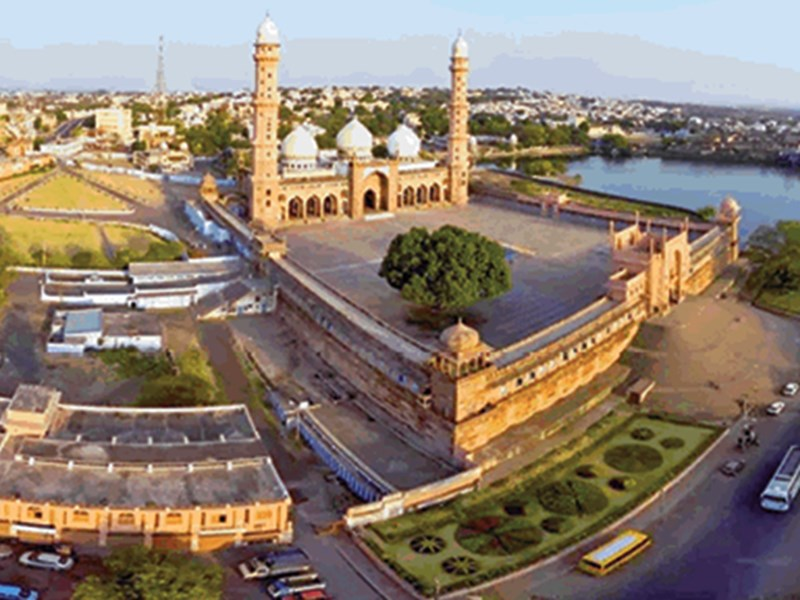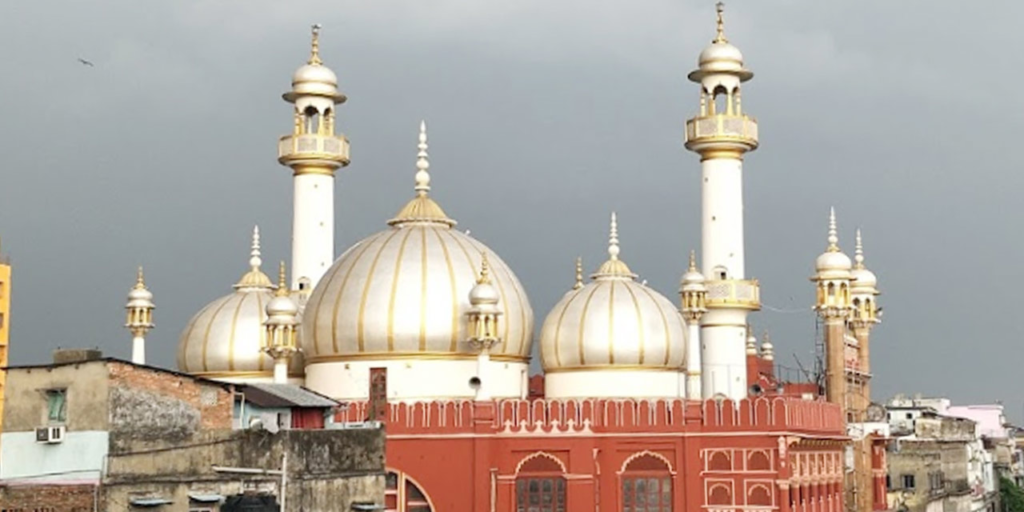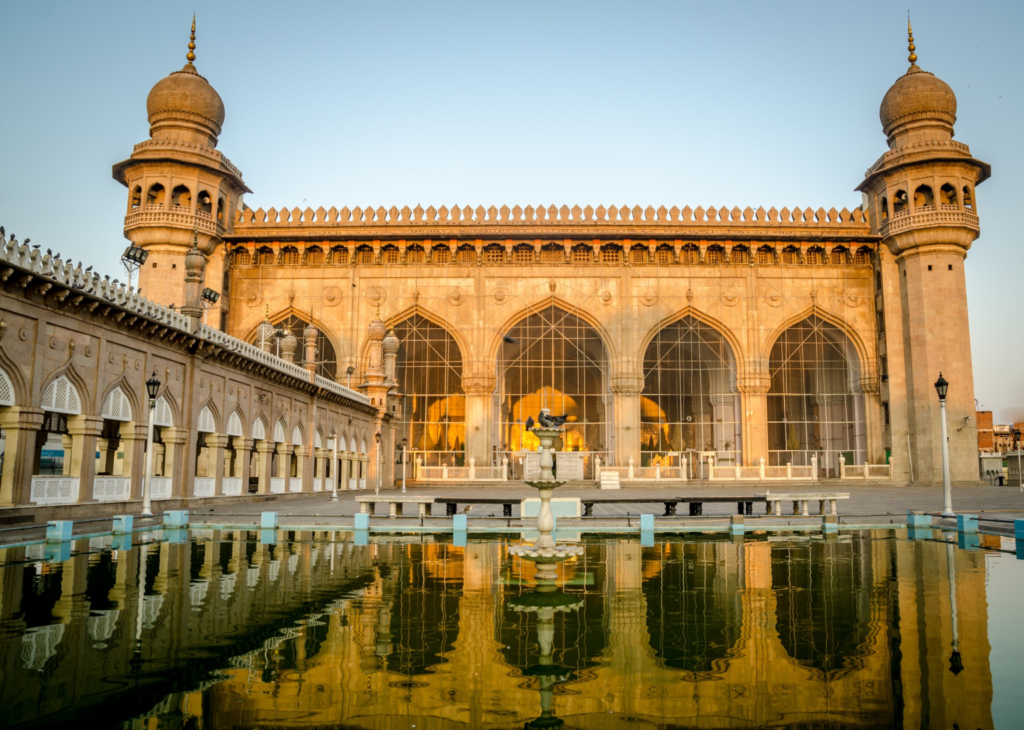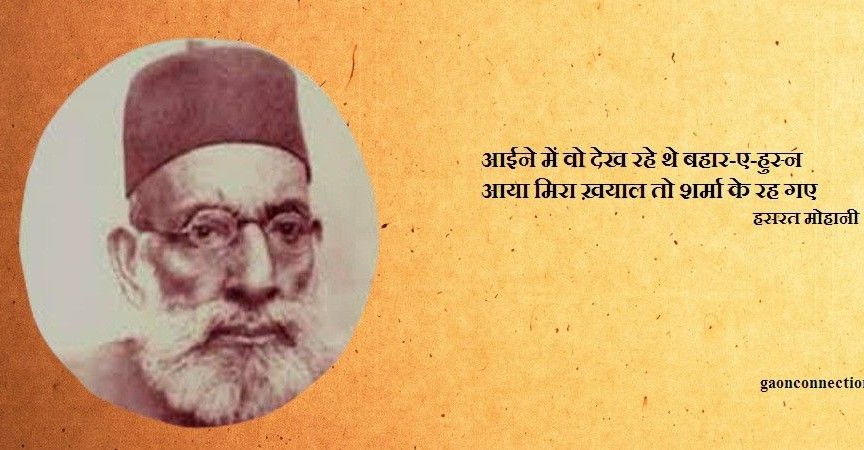Mosques in India are the first signature of erstwhile Indo-Islamic architectural magnificence. Since such grand mosques are there in every major city of India. They are a doorway into Indian history when Muslim rulers redefined Indian cultural landscape and decorated cities with grand mosques that are even today known as Jama Masjid (Congregational or Friday prayer mosque). Very often, such mosques have also been described as symbols of Islamic power in India. However, these days these medieval buildings not only attract devotees five times a day, they are visited by tourists from all over.
From the largest one like Jama Masjid in Delhi to the unique ones like Haji Ali in Mumbai which is in the middle of the sea, these structures tell the story of India’s glorious past. These monuments are worth a visit even if you aren’t religious to admire the sheer beauty and marvel at the detailing and thought put into these structures.
Some of such mosques known for their splendor and regal architecture are as following:
Jama Masjid, Delhi
Old Delhi’s most famous monument, the Jama Masjid is one of the grandest mosques in the country. Built by Mughal Emperor Shah Jahan, its courtyard can accommodate up to 25,000 people. Jama Masjid is about 261 feet long and 90 feet wide and its roof is covered with three domes. The floor is covered with black and white marble which looks like the Muslim prayer mats while the dome and minarets are made of red sandstone and white marble. It was built during 1650-1656 and was originally called Masjid-e Jahan-Numa. It took 5,000 workers to build this enormous structure and it cost one million rupees at that time.

The mosque was inaugurated by Imam Bukhari who had come down from present-day Uzbekistan on Shah Jahan’s request. But in 1857, the British had stationed their soldiers outside the mosque in an attempt to capture it and even wanted to destroy the structure. It is after much opposition that they decided to give up this idea. Today, the mosque stands tall with all its beauty intact. It has three gates, 40m high minarets and four towers. The architecture of the mosque is inspired by Islamic style. Each of the minarets is 5-storied with a balcony. The first three floors are made of red sandstone, the next one is marble and the fifth one is sandstone. The edifices adjoining them have calligraphy inscribed on them. In the north gate, there is a cabinet that houses the relics of Prophet Muhammad: the Quran written on deer skin, red-beard hair, his footwear and the prophet’s footprints imprinted in a marble block. Jama Masjid is the Indian subcontinent’s second biggest mosque. Its courtyard is situated on a ledge more than 30 steps above the street, providing the mosque with a commanding view of the surrounding region.
Hazratbal Mosque (Shrine), Srinagar
Located on the banks of Dal Lake, Hazratbal Mosque is considered to be the holiest Muslim shrine in Kashmir. Hazratbal, which means “respected place,” is a white-domed mosque in the heart of the main university area of Srinagar. This is the only mosque in Srinagar that has a dome while the others have a pagoda-like roof. From here, you can get a magnificent view of the lake as well as the surrounding mountains.

The shrine has a relic called the Moi-e-Muqqadas, which is believed to be the hair of the Prophet Muhammad. As per a legend, a descendant of the Prophet Muhammad, Syed Abdullah, brought the relic to India. Presently, the relic is kept in a glass case inside the mosque and is displayed on the holy days like Shab-e-Meraj. In January 1964, the sacred relic was recovered. Friday prayers see throngs of visitors pay a visit to the Hazratbal Shrine. Char Minar, Hyderabad It was constructed in 1591 by Mohommed Quli Qutub Shah to mark an end of plague in the city. The structure was greatly inspired by Arc de Triomphe. The Charminar got its name from the four minarets and are 48.7 metres in height. The landscape is visible from the minarets. The monument is a two storied building and the minarets have four stories and each side has a ring around the minaret. The building is square shaped and has four arches facing the four main directions, each side is open to huge courtyards.
The arches have a width of 11 metres and a height of 20 metres from the base. The minar displays Indo-Saracenic architecture that is a mixture of both Islamic and Hindu architecture. The arches and domes have been inspired from the Islamic architecture and the ornamentation has been influenced by Hindu architecture.
Taj-ul-Masjid, Bhopal
Taj-ul-Masjid or the Crown of Mosques is a pink mosque, decorated and themed with vintage motifs taken from Syrian mosques. It is the largest mosque in India and one of the largest mosques in the world. The massive octagonal minarets, arched doorways, nine cusped multiple entrances, and central prayer hall look stunningly gorgeous with the fresco paintings and Islamic inscriptions. It has a courtyard with a large ablution tank in the centre. It has a double-storeyed gateway with four recessed archways and nine cusped multifold openings in the main prayer hall.

The massive pillars in the hall hold 27 ceilings through squinted arches of which 16 ceilings are decorated with ornate petalled designs. The mosque also features a zenana (women’s gallery), rare given that prayer from home was the norm for women at the time of the mosque’s construction.
Kabuli Bagh Mosque, Panipat
A monument of great historic importance located in the Panipat district of Haryana, the Kabuli Bagh Mosque was originally built by Babur. It was to mark the emperor’s victory over Sultan Ibrahim Lodhi. Later the mosque received another masonry platform by the name of ‘Chabutra-i-Fateh Mubarak’ from Humayun when he defeated Salim Shah in battle.

Its architecture is to some extent a replica of royal mosques in Samarkand with large arched domes. Babur could not replicate the Timurid architecture fully as trained artisans and engineers were not available in India in creating this type of architecture.
The mosque built with bricks and stucco plaster within a compound wall faces north. The corners of the mosque have towers of octagonal shape in the northwest and south west directions.
Its entry gate built with bricks and red sandstone has an enclosed “bracket type lintel” opening of which is shaped like a large arch; its spandrels have ornamentation, enclosed in rectangular panels provided with arched recesses.[1] The prayer hall is large and measures 53.75 by 16.5 metres (176 by 54 ft) , and is covered by a large dome.
There is a Qibla, a niche in the prayer chamber wall which is oriented towards Mecca. This central bay is visible even from the outside through its wide entrance opening. The mihrab here has an epigraph which includes the “Throne Verse from the Quran”.
Jumma Masjid, Bengaluru
Built in the 1790s, the Jumma Masjid is a beautiful monument dedicated to the beloved king, Tipu Sultan. The mosque is covered in elaborate artwork and floral motifs, which is quite a sight to catch. In the month of Ramadan, the mosque is lit up in bright light to give it a brilliant look in the evenings. The magnificent twin minarets inside the mosque that stretch up to the spherical domes above the balconies are absolutely stunning.
The mosque was damaged during the Mysore war and later renovated.

The arch above the pulpit has impressive carvings with Persian inscriptions in gold on either side, with an old clock that has not stopped ticking for the past 115 years now (as of 2023). The inscriptions are by poets such as Muhammad Jalal Sahib Qadri (Wafa) and Ali Sahab (Qasam). Interestingly, the mosque is situated between two temples.
Jama Masjid, Mathura
With spellbinding architecture, including majestic carvings, minarets, and a raised courtyard, Jama Masjid, Mathura was constructed in 1661 by the then Governor of Aurangzeb, Abd-al-Nabi Khan. Amongst all the wondrous mosques, this mosque offers an immensely serene ambiance and awe-inspiring views.
The Jama Masjid is located at the centre and highest point of Mathura, raised from the ground by a plinth. It was constructed using red sandstone. The mosque has four minarets that are each 40 m (132 ft) high. A gateway stands in front of the mosque, featuring tile-work. Within the courtyard is a large ablution pool, as well as several rectangular pavilions. These pavilions feature Bangla roofs and ogival arches. The main prayer hall is smaller in scale than the gateway and minarets. Atop the prayer hall are three bulbous domes, of which the central one is the largest. The hall’s facade historically had the ninety-nine names of Allah with Persian inscriptions on either side.
Jama Masjid of Tonk, Rajasthan
One of the biggest mosques in the country, the Jama Masjid’s construction began in 1246 by Amir Ali Khan, the first Nawab of Tonk and it was completed in 1298 by his son, Nawab Wazirudhoula. There are paintings with gold and ‘meenakari’ work on the walls of the mosque. The mosque has four doors and four minarets. It is constructed in the Mughal architectural style and is regarded as one of the most grandeur mosques of the country. It resembles the Jama Masjid in Delhi with a few structural differences. In the Delhi mosque, the water reservoir is in the centre but in the Jama Masjid of Tonk, it is in the corner. Built at the junction of two roads, one side leads to the Nawab’s palace while the other one to Kota.

The eastern gate of Jama Masjid of Tonk is adorned by two minarets that are fairly small while three sides of the structure are surrounded by a small verandah. The northern gate is far grander and has nine minarets. The prayer hall of the mosque has verses inscribed from the Holy Quran. It also has three gates with the centre one 30 ft high and the other two 20 ft in height. The Jama Masjid of Tonk is a fine example of Mughal architecture with its exquisite edifices, intricate leaf work and towering gates.
Nakhoda Mosque, Kolkata
Nakhoda Mosque is a century-old mosque, situated in Kolkata. Featuring a prayer hall with a capacity of around 10,000, the mosque is regarded as one of the busiest mosques in Kolkata. The architectural design of the mosque is stunning and the entire structure is built with red sand stones.

This magnificent mosque is 151 feet high and is one of the largest mosques in Kolkata. The mosque’s prayer hall has a capacity of 10,000. The masjid has three domes and two minarets which are 151 feet high. There are an additional 25 smaller minarets which range from 100 feet to 117 feet high. The gateway is an ersatz of the Buland Darwaza at Fatehpur Sikri. For this purpose granite stones were brought from Tolepur. Inside is a superb exhibition of exquisite ornamentation and artistic extravaganza.
Mecca Masjid, Hyderabad
Mecca Masjid or Makkah Masjid is one of the oldest mosques in India, located near Chowmahalla Palace, Laad Bazaar in Hyderabad. Constructed by Muhammad Quli Qutb Shah, it is named Mecca because it is believed that the bricks and soil during its erection were transported from Mecca.
The Mecca Masjid is considered to be one of the best architectural works of the Qutb Shahis. It is constructed entirely of dressed stone, rather than rubble or plaster. The mosque’s prayer hall measures 225 feet (69 m) by 180 feet (55 m), and has a 75 feet (23 m) high ceiling. The facade of the prayer hall features five open arches, and is flanked by two minarets. Each minaret is topped by a dome, and adjoined to an arcaded balcony lining either side of the prayer hall.

The sahn (courtyard) of the mosque measures 108 square metres. It contains a sundial, as well as the remains of a hammam. Two minarets lie on either side of the main entrance to the mosque complex.
Towards the southern end of the mosque lie the marble tombs of the Asaf Jahi rulers and family members, save the first (Asaf Jah I) and the last (Asaf Jah VII). These are housed in a rectangular, arched, and canopied building, which was added in 1914 during the rule of Mir Osman Ali Khan, the last Asaf Jahi ruler. At both ends of this resting place for the Asaf Jahi are two rectangular blocks with four minarets each. These minarets have elegant and circular balconies with low ornamental walls and arches. Above them is an octagonal inverted platter from which the rest of the minarets soar until arrested by a dome and a spire.




